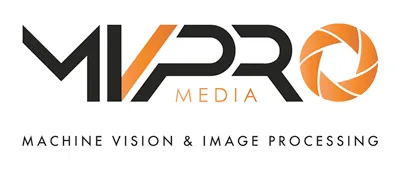Mark Williamson, European Editor at Large, takes a look at why trade shows and conferences are so important to our industry.
May is arguably the busiest month in the machine vision industry calendar, with a plethora of trade shows including Vision UK, the Automate show in the US, Control in Germany, and SPS in Italy. These all culminated with the annual European Machine Vision Association (EMVA) conference, held this year in the beautiful city of Rome. While trade shows have faced challenges in recent years, I firmly believe that face-to-face interactions remain critical for building trust between suppliers, customers, and partners. These events offer an efficient and concentrated opportunity for such discussions.

Over time, machine vision events have increasingly become part of larger automation and robotics exhibitions. This trend benefits visitors, as most industrial machine vision systems are integrated into wider automation systems. Typically, end-users exploring machine vision are also in the market for automation equipment. However, because vision represents a niche within the broader automation market, the event setups often don’t cater optimally to the needs of specialized machine vision suppliers.
Vision UK took place at the start of May and, for the second year, was held as part of the larger Automation UK event. Exhibitors reported that while foot traffic wasn’t overwhelming, many new faces were present, and several exhibitors noted an increase in new project discussions. The pessimism of the previous year seems to be lifting. This year, the event shifted from a conference-centric format—with four theatres, previously six—to a more exhibition-focused layout featuring just two theatres. My standout presentation came from Tim Dawson of Interact Analysis, who shared a compelling market outlook. Unlike many analyst reports lacking industry insight, Dawson’s presentation offered a refreshing and knowledgeable perspective, highlighting emerging technologies and growth areas. His conclusions align closely with recent updates from the VDMA Machine Vision statistics and my own work with Vision Markets, suggesting that 2025 will be a pivotal transition year. After a period of contraction, the industry appears poised for renewed growth. Conversations with machine vision OEM leaders confirm that the overstocking of equipment due to the 2022 component shortages is abating, and capital investment is returning, buoyed by early signs of falling interest rates. Interestingly, despite recent US tariffs causing disruption, global sentiment remains largely positive.
While merging vision exhibitions with broader automation events increases visibility for machine vision, there is still a strong case for dedicated, vision-focused conferences that serve the unique needs of companies operating in this space.

Since the AIA conference in the US merged with its sister associations to form the A3 conference in 2013, and the VDMA Machine Vision Summit aligned with robotics and automation sectors in 2023, the EMVA conference remains the sole business-focused event dedicated specifically to machine vision. While many business topics are shared across automation and vision sectors, it’s valuable to have a specialized networking forum. This year’s EMVA conference in Rome did not disappoint. Among the 105 attendees, the majority were European, but the US and China were also represented, giving the event a distinctly global flavor. With a dedicated networking app, over 120 scheduled meetings took place. The attendee mix included manufacturers, OEM users, and M&A and business consultants—making it the ideal venue to explore growth opportunities.
The presentations covered a balanced mix of topics, including market trends, M&A strategies, novel application use cases, and new technology developments. Given the Rome location, there was a particular emphasis on the Italian market, which ranks second only to Germany in manufacturing equipment production in Europe. As is tradition, some sessions focused on the local landscape.
A standout talk came from Barilla, the renowned Italian food manufacturer. In last month’s article, I discussed the benefits of integrating machine vision into broader factory systems to support Industry 4.0. Barilla exemplifies this integration. Of their 55 production lines, 51 already use vision systems, with plans for further expansion. What stands out is their company-wide infrastructure: data from all systems is used not only for direct feedback control but is also made visible throughout their facilities, including on employee mobile devices. This enables continuous improvement and early identification of process variations. Their next major step involves creating digital twins of their production lines to model process changes using vision-captured data. I previously discussed digital twin technology in the March issue and startups like Medabsy that are making this a reality.
Other noteworthy presentations included one on autonomous trains, highlighting the surprising complexities and technical requirements for reliable operation in what might appear to be a controlled environment. The reality proved far more challenging than expected.
Innovation often comes from novel applications of existing technologies. I was intrigued by the work of Biometric, a company deploying industrial CT systems. While CT is widely known in medical contexts, its industrial applications are vast. For example, scanning tree trunks enables optimal cutting strategies to maximize yield of high-grade timber. In food inspection, CT offers a 360-degree view inside products, identifying foreign objects and inconsistencies in filling distribution, even in mixed product boxes post-packaging.
Among the emerging technologies, two presentations particularly stood out. The first was from startup Singular Photonics, which introduced a new sensor architecture capable of counting individual photons. This breakthrough is poised to revolutionize low-light imaging, traditionally reliant on long exposures and sensor cooling. Beyond imaging, photon counting enhances dynamic range, bringing sensors closer to mimicking human vision, and opens up new possibilities in LiDAR and time-of-flight applications.
The second was from Nireos, which has developed a novel hyperspectral imaging technology based on Fourier transforms rather than conventional spectrometer prisms. In the May issue, I discussed the high cost and mechanical complexity of traditional hyperspectral systems. Nireos’ approach allows stationary objects to be inspected without sacrificing sensitivity or resolution. Already applied in life sciences, materials science, and smart farming (primarily offline), this innovation shows promise for inline applications as well. Combined with the latest SWIR sensor technologies discussed in the May MVPro issue, this approach could make hyperspectral imaging more accessible and cost-effective, paving the way for broader adoption.
Overall, the events and insights from May reaffirm that machine vision continues to evolve rapidly, with face-to-face engagement playing a pivotal role in fostering innovation and growth across the industry.

















